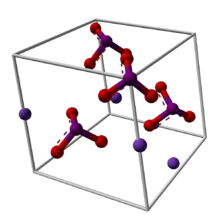
| |

| |
| Names | |
|---|---|
| IUPAC name
Potassium iodate
| |
| Other names
Iodic acid, potassium salt
| |
| Identifiers | |
3D model (JSmol)
|
|
| ChemSpider | |
| DrugBank | |
| ECHA InfoCard | 100.028.938 |
| EC Number |
|
| E number | E917 (glazing agents, ...) |
PubChem CID
|
|
| RTECS number |
|
| UNII | |
CompTox Dashboard (EPA)
|
|
| |
| |
| Properties | |
| KIO3 | |
| Molar mass | 214.001 g/mol |
| Appearance | white crystalline powder |
| Odor | odorless |
| Density | 3.89 g/cm3 |
| Melting point | 560 °C (1,040 °F; 833 K) (decomposes) |
| 4.74 g/100 mL (0 °C) 9.16 g/100 mL (25 °C) 32.3 g/100 mL (100 °C) | |
| Solubility | soluble in KI solution insoluble in alcohol, liquid ammonia, nitric acid |
| −63.1·10−6 cm3/mol | |
| Hazards | |
| GHS labelling: | |
  
| |
| H272, H302, H318 | |
| P210, P280, P301+P312+P330, P305+P351+P338+P310 | |
| NFPA 704 (fire diamond) | |
| Flash point | Non-flammable |
| Related compounds | |
Other anions
|
Potassium chlorate Potassium bromate |
Other cations
|
Sodium iodate |
Related compounds
|
Potassium iodide Potassium periodate |
Except where otherwise noted, data are given for materials in their standard state (at 25 °C [77 °F], 100 kPa).
| |
Potassium iodate (KIO3) is an ionic inorganic compound with the formula KIO3. It is a white salt that is soluble in water.[1]
